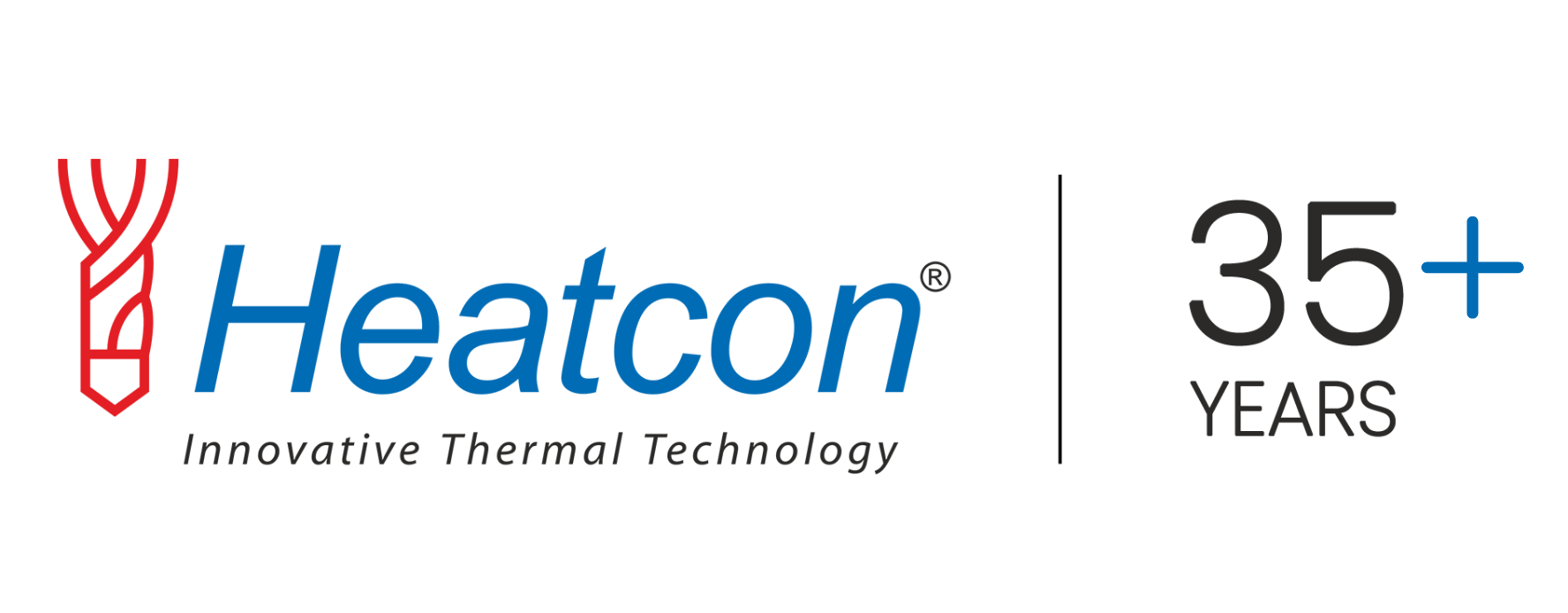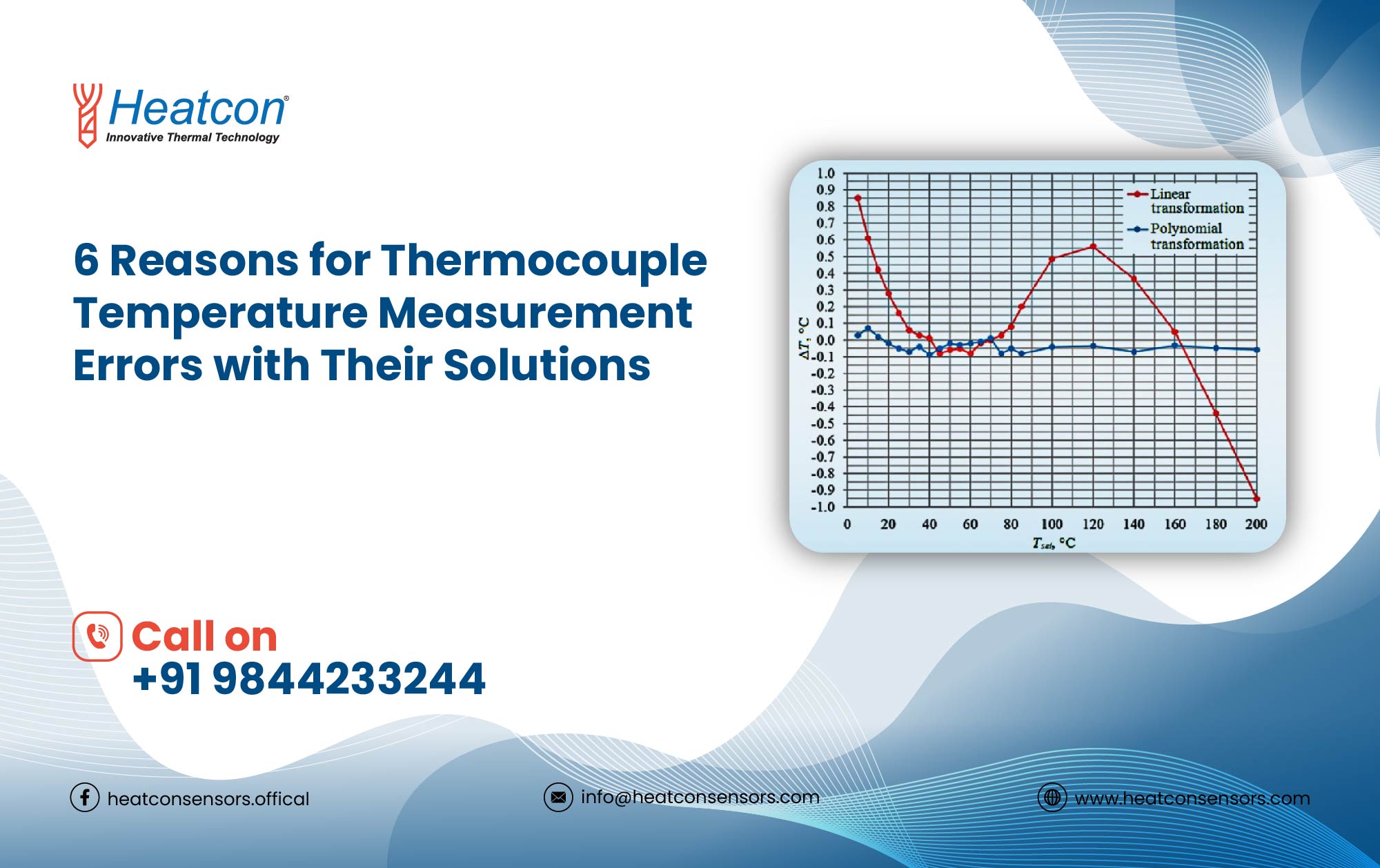Thermocouples rank among the most favored instruments for industrial temperature measurements due to their adaptability, accuracy, and user-friendliness. But thermocouple temperature measurement errors can still arise. Thermocouples tend to serve as quite robust temperature gauges that are suitable for numerous industrial & scientific tasks. Their affordability relative to their measurement technologies stems from their capability to measure a broad temperature spectrum that ranges from as low as –200°C to as high as +1250°C (–328° to +2282°F).
Thermocouple Operating Principle
Operating on the principle of measuring temperature differentials instead of absolute values, thermocouples contain two wires made from distinct metals that are joined at the tip, forming a measuring junction. The wires connect to a body of known temperature, which is termed the reference junction, at the opposite end. By detecting the voltage disparity between these 2 junctions, facilitated by the Seebeck effect, thermocouples tend to convert this voltage into temperature units, which are then displayed/transmitted for remote monitoring.
6 Causes for Thermocouple Temperature Measurement Errors with Solutions
Sometimes, thermocouples are susceptible to errors in temperature measurements owing to various factors. Below are the 6 most prevalent reasons for thermocouple inaccuracies, along with their suggested remedies:
1.Wrong Selection of Thermocouple Type on the Transmitter:
- Errors tend to arise if a wrong thermocouple type has been selected while configuring the settings on the transmitter during the process of installation. With many thermocouple types available around, such as K, N, E, J, T, R, S, & B, each having its own set of distinct characteristics, confusion is obvious.
- Solution: You must verify the colour of the thermocouple jacket that is typically color-coded by its type, and then adjust your settings on the transmitter as per that only.
2. Issues Related to the Thermocouple’s Extension Wire:
- Reversing the polarity of the thermocouple’s lead wires could possibly lead to temperature measurement discrepancies that are usually equivalent to temperature differences between the 2 ends of the leads. Such a problem is compounded by the unconventional coloration of thermocouple cables, where the red wire often carries the negative signal.
- Solution: Double-check your connections and also try to swap the thermocouple lead wires.
3. Inherent Variations in the Alloys:
- Minor discrepancies in alloy percentages at the time of manufacturing the product can result in unavoidable errors in the accuracy of thermocouples.
- Solution: Choose the best thermocouples with special-limit wires. Manufacturers construct them to the highest tolerances to enhance their accuracy.
4. Temperature Fluctuations Occurring Around the Reference Junction Connection:
- Ambient temperature fluctuations occurring around the reference junction can affect the accuracy of temperature readings. These can also skew temperature readings owing to the differential measurement principle of the thermocouples.
- Solution: Ensure that no cooling/heating sources are lying near the reference junction. Also, consider insulating these junctions to help them shield from extreme temperatures.
5. Multiple Grounding Locations for Thermocouples:
- Grounding a thermocouple device at more than 1 particular location can create a “ground loop.” This causes current to flow through the thermocouple between different ground points. This can possibly cause electromagnetic field generation & related interference issues. These also tend to affect temperature measurement accuracy.
- Solution: Ground any one of them; either the transmitter or the controller/recorder, but not both. You must utilize transmitters with internal isolation between input/output, and ground or employ loop isolators for preventing ground loop formation.
6. Aging:
- Thermocouples tend to experience measurement drift with prolonged usage, which can lead to inaccuracies over time. Some factors are maximum temperature exposure, frequency of cyclic measurements, and the number of cycles. They tend to impact the metallurgy. This results in gradual drift, typically downwards, in temperature measurements.
- Solution: Replace thermocouples periodically based on use, as drift can’t be predicted. Temperature errors of 10-20°F tend to be common indicators for replacement.
Choose Heatcon as Your Trusted Partner for Procuring the Best Range of Products
You are sure to find the best range of temperature sensors at Heatcon Sensors, your trusted partner for high-quality measurement solutions.


